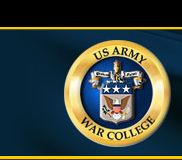Files
Download Full Text (95 KB)
Description
In April 1994, the Army War College's Strategic Studies Institute held its annual Strategy Conference. This year's theme was "The Revolution in Military Affairs: Defining an Army for the 21st Century." Dr. Bruce Hoffman presented this paper as part of a panel examining "New Technologies and New Threats." Terrorism, of course, is not new. Hoffman warns, however, of the changing nature of terrorism. In the past, terrorists have been motivated by limited political and ideological objectives. Popular images fostered by terrorist events like the bombing of PAN AM Flight 103 and the attack on the Marine Barracks in Beirut notwithstanding, in the past the preponderance of terrorist attacks targeted specific individuals or small groups. The weapons of choice were the pistol, knife, and, on occasion, dynamite. Often the terrorist was a highly-trained individual, a "professional" in pursuit of specific political or ideological objectives. Hoffman warns that, by comparison, the terrorists of today and tomorrow are amateurs. Furthermore, they are likely to act from religious and racial convictions rather than radical political or ideological motivations. Their objective may be to kill large numbers of people. Indeed, they may want to annihilate an entire race or religious group. Not only are these amateurs less predictable and, therefore, more difficult to apprehend before the incident occurs, they have at their disposal lethal devices that range from the relatively simple fertilizer bomb to biologically-altered viruses. Military professionals and civilian planners must contend with warfare at every level. The threat posed by the changing nature of terrorism falls very much within their purview.
Publication Date
7-1-1994
Keywords
Annual Strategy Conference; bioterrorism; biological warfare; biochemical; Hoffman; terrorism; technology; North Korea; Iran; Iraq; Syria
Recommended Citation
Bruce Hoffman Dr.,
Responding to Terrorism across the Technological Spectrum ( US Army War College Press, 1994),
https://press.armywarcollege.edu/monographs/258


